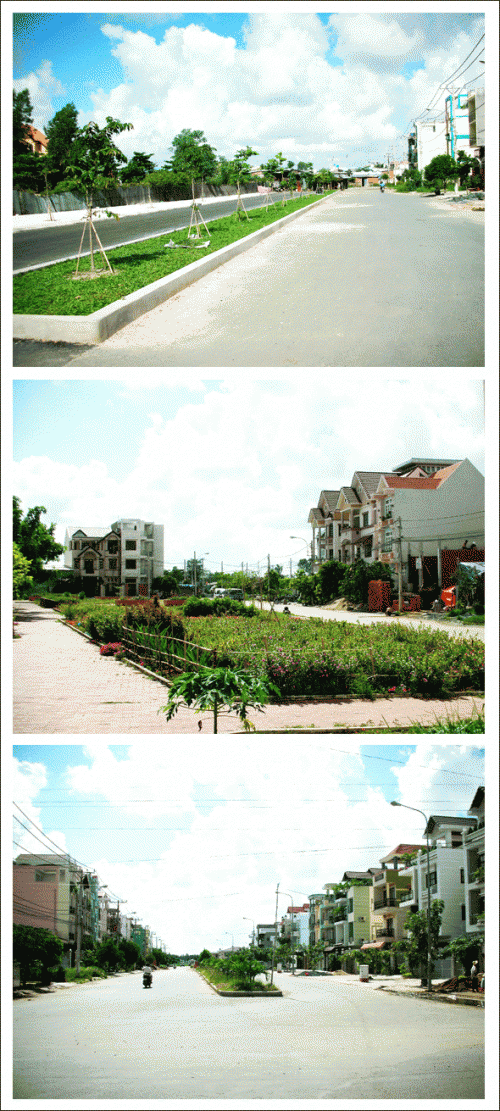The Economic and Budgeting Committee under the Ho Chi Minh City People’s Council has recently suggested the municipal People’s Committee reclaim several freight yards in District 8 to construct housing projects.

District 8 has insufficient land for resettlement programs to eliminate slum housing along the canals, while several freight yards owned by state agencies have not been put to good use, according to the committee’s report.
The outlying district, one of the poorest localities in the city which used to serve as the main entry-point for products from the Mekong Delta and southeastern provinces, has 159 freight yards covering more than 430,000 square meters.
A survey last month found more than 300,000 square meters of such yards, valued at nearly VND10 trillion (US$587.2 million), have been wasted, said Nguyen Minh Hoang, head of the Economic and Budgeting Committee.
However, several agencies have reportedly stalled or demanded unreasonable compensations to hand over the unused land to the city.
District 8 People’s Committee Chairman Nguyen Thanh Chung said the locality needs around 20,000 houses for resettlement programs by 2015, but there is a shortage of available land.
The district has requested city authorities take back 77 freight yards to convert into public projects but bureaucracy and other obstacles have delayed the process.
For example, though the city government had issued a decision to use land at a former freight yard on Luong Ngoc Quyen Street in Ward 13 to build a kindergarten school, the plot is still being occupied by squatters unwilling to move out.
Wasted spaces
A recent research by Thanh Nien found several freight yards in District 8 either abandoned and left to deteriorate or improperly leased out.
There is a 20,000-square-meter plot of land located on Ho Hoc Lam Street in Ward 16 housing a few empty offices in a flooded area full of weeds. The freight yard is owned by PETEC Trading and Investment Corporation.
A nearby resident said the yard was once leased to another company to store chalk, but they had moved out some years ago after the area was seriously flooded.
“The water can reach your shoulder at some places,” she said.
On Ben Binh Dong Street, a 2,650- square-meter yard owned by Vietnam Southern Food Corporation (Vinafood 2) has been left empty while a 600- square-meter yard belonging to the Food Company of HCMC (Foocosa) has become a garbage dump for local residents.
At a 4,700-square-meter freight yard also belonging to Vinafood 2 on the same street, a section is seriously rundown while the remaining areas have served as a scrap depot for years.
Another freight yard covering more than 1,400 square meters at a favorable spot on Ben Binh Dong Street, owned by a local grocery company, has been leased out for years to a printing firm and an egg processing company.
Saigon Trading Center was also found renting out a part of its empty storage at the crossroad between Nguyen Van Cua and Ben Binh Dong streets to a bicycle company.

District 8 has insufficient land for resettlement programs to eliminate slum housing along the canals, while several freight yards owned by state agencies have not been put to good use, according to the committee’s report.
The outlying district, one of the poorest localities in the city which used to serve as the main entry-point for products from the Mekong Delta and southeastern provinces, has 159 freight yards covering more than 430,000 square meters.
A survey last month found more than 300,000 square meters of such yards, valued at nearly VND10 trillion (US$587.2 million), have been wasted, said Nguyen Minh Hoang, head of the Economic and Budgeting Committee.
However, several agencies have reportedly stalled or demanded unreasonable compensations to hand over the unused land to the city.
District 8 People’s Committee Chairman Nguyen Thanh Chung said the locality needs around 20,000 houses for resettlement programs by 2015, but there is a shortage of available land.
The district has requested city authorities take back 77 freight yards to convert into public projects but bureaucracy and other obstacles have delayed the process.
For example, though the city government had issued a decision to use land at a former freight yard on Luong Ngoc Quyen Street in Ward 13 to build a kindergarten school, the plot is still being occupied by squatters unwilling to move out.
Wasted spaces
A recent research by Thanh Nien found several freight yards in District 8 either abandoned and left to deteriorate or improperly leased out.
There is a 20,000-square-meter plot of land located on Ho Hoc Lam Street in Ward 16 housing a few empty offices in a flooded area full of weeds. The freight yard is owned by PETEC Trading and Investment Corporation.
A nearby resident said the yard was once leased to another company to store chalk, but they had moved out some years ago after the area was seriously flooded.
“The water can reach your shoulder at some places,” she said.
On Ben Binh Dong Street, a 2,650- square-meter yard owned by Vietnam Southern Food Corporation (Vinafood 2) has been left empty while a 600- square-meter yard belonging to the Food Company of HCMC (Foocosa) has become a garbage dump for local residents.
At a 4,700-square-meter freight yard also belonging to Vinafood 2 on the same street, a section is seriously rundown while the remaining areas have served as a scrap depot for years.
Another freight yard covering more than 1,400 square meters at a favorable spot on Ben Binh Dong Street, owned by a local grocery company, has been leased out for years to a printing firm and an egg processing company.
Saigon Trading Center was also found renting out a part of its empty storage at the crossroad between Nguyen Van Cua and Ben Binh Dong streets to a bicycle company.
From: Minh Nam

Post a Comment
Post a Comment